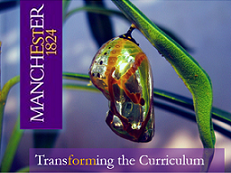Sugar Sculpture: A Form of Sustainable Handicraft
This blog aims to demonstrate the cultural and environmental sustainability of a traditional Chinese handicraft known as sugar sculpture by analyzing a previous literature review. I chose sugar sculpture because it is a traditional Chinese handicraft, and also a popular snack featuring characters such as animals, flowers, humans and so on.

The history of sugar sculpture dates back to the Song dynasty. In 2008 it was established as an intangible form of heritage because it has both the characteristics of entertainment and delicious taste. One of the primary benefits of sugar sculpture is the fact that the raw materials it uses are a type of renewable biomass energy crop, which can also be utilized in fuel and other products. Accordingly, it is very practical to study the cultural and environmental values of sugar sculpture.
In this context cultural sustainability refers to the notion that sugar sculpture is a type of Chinese folk art with ancient and unique characteristics. Furthermore, it possesses strong local and regional qualities, as well as forming a distinctive part of the national character. Sugar sculpture has been given modern craft irreplaceable cultural values.
Historically, there were very few places where sugar sculptures could be sold. As such it was common for artists to be seen carrying their wares around the streets and lanes. One end of the burden is a shelf of sugar sculpture and two small drawers which are used for supporting materials and tools, the other end of the burden is a wooden box which contains some sundries, heating stoves and ready-made crafts that can be used as seats (Hanzhong, 2006).
The first stage is to fill a steel box full of sawdust, and then place it under malt sugar. The micro-burning sawdust will then keep the maltose in a soft but not melted state, so that the artist can mold the sugar and plastic without the potential danger of an open fire. Modern artists tend to equip themselves more simply, with a kit including a bamboo basket, bamboo sticks and a stove. One side of the bamboo basket is tied with a sponge for the sugar sculpture, then a burden or a bamboo basket can be able to make a living and make a trade that’s all about the sugar artist has (Jitong, 2005).
Sugar sculptures make use of four different colors: yellow, red, green and black, and adopt a vivid, lifelike model. In ancient times, sugar sculptures were seen as thoughtful, well-meaning gifts presented at weddings, funerals and sacrificial rites. The creative process involved in the creation of sugar sculpture is extremely ornamental, often leaving the audience impressed at the skill of the artists who are able to make vivid animals and plants without the use of tools – simply using blowing and sucking techniques.

The basis of the environmental sustainability can be traced back to the process of sugar cane plantation and production. Due to concerns about environmental degradation and the broader conditions of life, the focus of many people has shifted towards reducing the emission of greenhouse gases and protecting our environment (Pearce, 2013).
Accordingly, it is necessary to find a renewable fuel source to replace fossil fuels. The raw material of sugar is sugarcane, which is one of the best renewable biomass energy crops. Its biofuel (ethanol) is called green energy. During the 1970s, Brazil began to use sugar cane in the production of ethanol, instead of oil.
China is a country with significant energy consumption – ranking second in the world. Indeed, their annual energy consumption accounts for 11% of the global total. Since 1993, China has been an oil-importing country, with imports increasing at an average annual rate of 13%. Owing to this increasing in import-dependence and the world oil crisis, China’s economic development has been constricted – in addition to a number of national security implications (Crompton, 2005).
Sugarcane bagasse is a form of renewable fibrous material, which is the residue of lignocellulose created during the process of sugarcane juicing. As a component of sugarcane, bagasse has natural, bio-degradable characteristics, and has been attracting a great deal of attention due to its use in composite materials (Loh, 2013). Nowadays, bagasse is used to manufacture eco-friendly food service products, replacing traditional paper and plastic, because those products manufactured using bagasse require less energy.
Tableware made using bagasse offers high levels of whiteness and compactness, good resistance to oil and high temperatures, whilst also being non-toxic and odorless – and can be completely degraded in three just months. Furthermore, the production process has no pollutant emissions and the cost in Guangxi (a Chinese city) is much lower than molded pulp snack box. The chemical ingredients of the sugar cane are similar to wood. As such, it can be used to produce high-density composite resources. Owing to the proportion of available bagasse, in addition to the good quality fiber, the high plate strength, the low weight, and the fact that the plate and profile of the production are not affected by biology, it is suitable for the production of furniture, cars, ships, packing boxes and so forth.


Due to the culture and environmental sustainability, it is the author’s opinion that sugar sculpture should be known to more people. It is my hope that more people who read my blog will come to love this tradition of Chinese heritage, and learn about this environmentally friendly plant; the product of which has a number of applications in our daily lives.
Reference
- Jitong, C., 2005 Sugar Art, Shenyang: Liaoning science and technology press.
- Pearce, D., Markandya, A. and Barbier, E., 2013. Blueprint 1: for a green economy. Routledge.
- Crompton, P. and Wu, Y., 2005. Energy consumption in China: past trends and future directions. Energy economics, 27(1), pp.195-208.
- Loh, Y.R., Sujan, D., Rahman, M.E. and Das, C.A., 2013. Sugarcane bagasse—The future composite material: A literature review. Resources, Conservation and Recycling, 75, pp.14-22.

